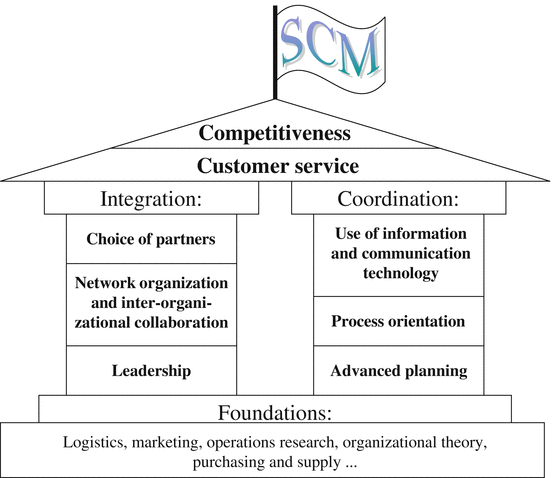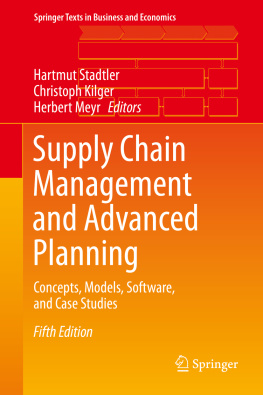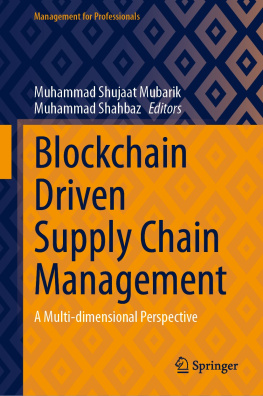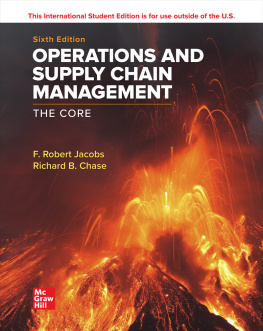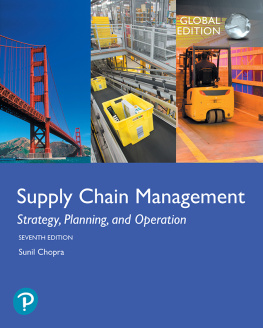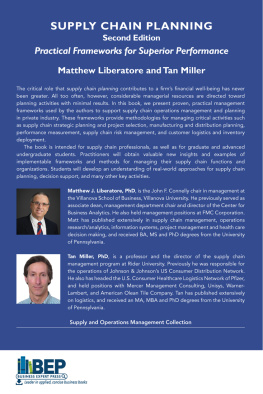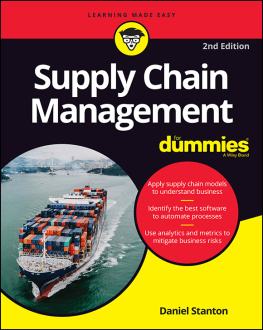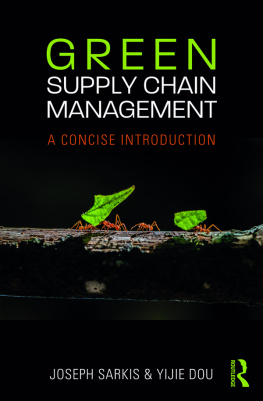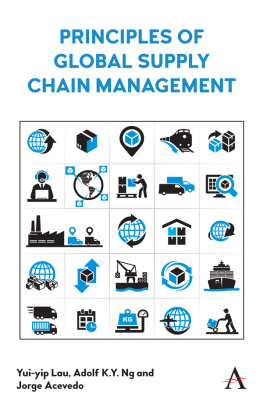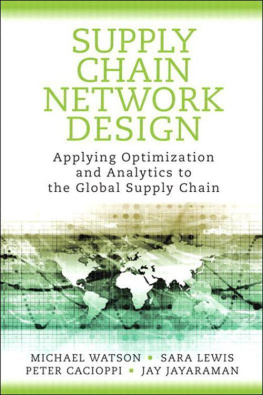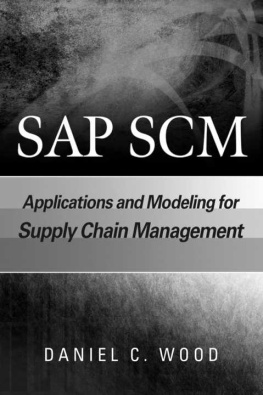What is the essence of Supply Chain Management (SCM)? How does it relate to Advanced Planning? In which sense are the underlying planning concepts advanced? What are the origins of SCM? These as well as related questions will be answered in this chapter.
1.1 Definitions
During the 1990s several authors tried to put the essence of SCM into a single definition. Its constituents are
The object of SCM obviously is the supply chain which represents a network of organizations that are involved, through upstream and downstream linkages, in the different processes and activities that produce value in the form of products and services in the hands of the ultimate consumer (Christopher , p. 17). In a broad sense a supply chain consists of two or more legally separated organizations, being linked by material, information and financial flows. These organizations may be firms producing parts, components and end products, logistic service providers and even the ultimate consumer (synonym: customer) himself. So, the above definition of a supply chain also incorporates the target groupthe ultimate customer.
As Fig. shows, a network usually will not only focus on flows within a (single) chain, but will have to deal with divergent and convergent flows within a complex network resulting from many different customer orders to be handled in parallel. In order to ease complexity, a given organization may concentrate only on a portion of the overall supply chain. As an example, looking in the downstream direction the view of an organization may be limited by the customers of its customers while it ends with the suppliers of its suppliers in the upstream direction.
Fig. 1.1
Supply chain (example)
In a narrow sense the term supply chain is also applied to a large company with several sites often located in different countries. Coordinating material, information and financial flows for such a multinational company in an efficient manner is still a formidable task. Decision-making, however, should be easier, since these sites are part of one large organization with a single top management level. A supply chain in the broad sense is also called an inter-organizational supply chain, while the term intra-organizational relates to a supply chain in the narrow sense. Irrespective of this distinction, a close cooperation between the different functional units like marketing, production, procurement, logistics and finance is mandatorya prerequisite being no matter of course in todays firms.
The objective governing all endeavors within a supply chain is seen as increasing competitiveness. This is because no single organizational unit now is solely responsible for the competitiveness of its products and services in the eyes of the ultimate customer, but the supply chain as a whole. Hence, competition has shifted from single companies to supply chains. Obviously, to convince an individual company to become a part of a supply chain requires a win-win situation for each participant in the long run, while this may not be the case for all entities in the short run. One generally accepted impediment for improving competitiveness is to provide superior customer service which will be discussed in greater detail below (Sect.). Alternatively, a firm may increase its competitiveness by fulfilling a prespecified, generally accepted customer service level at minimum costs.
There are two broad means for improving the competitiveness of a supply chain. One is a closer integration (or cooperation) of the organizations involved and the other is a better coordination of material, information and financial flows (Lee and Ng , p. 1). Overcoming organizational barriers, aligning strategies and speeding up flows along the supply chain are common subjects in this respect.
We are now able to define the term Supply Chain Management as the task of integrating organizational units along a supply chain and coordinating material, information and financial flows in order to fulfill (ultimate) customer demands with the aim of improving the competitiveness of a supply chain as a whole.
1.2 Building Blocks
The House of SCM (see Fig.) illustrates the many facets of SCM. The roof stands for the ultimate goal of SCMcompetitivenesscustomer service indicates the means. Competitiveness can be improved in many ways, e.g. by reducing costs, increasing flexibility with respect to changes in customer demands or by providing a superior quality of products and services.
The roof rests on two pillars representing the two main components of SCM, namely the integration of a network of organizations and the coordination of information, material and financial flows. The figure also shows that there are many disciplines that formed the foundations of SCM.
The two main components which incur some degree of novelty, will now be broken down into their building blocks. Firstly, forming a supply chain requires the choice of suitable partners for a mid-term partnership. Secondly, becoming an effective and successful network organization , consisting of legally separated organizations calls for actually practicing inter-organizational collaboration . Thirdly, for an inter-organizational supply chain, new concepts of leadership aligning strategies of the partners involved are important.
The coordination of flows along the supply chain can be executed efficiently by utilizing the latest developments in information and communication technology . These allow processes formerly executed manually to be automated. Above all, activities at the interface of two entities can be scrutinized, while duplicate activities (like keying in the data of a consignment) can be reduced to a single activity. Process orientation thus often incorporates a redesign followed by a standardization of the new process.
For executing customer orders, the availability of materials, personnel, machinery and tools has to be planned. Although production and distribution planning as well as purchasing have been in use for several decades, these mostly have been isolated and limited in scope. Coordinating plans over several sites and several legally separated organizations represents a new challenge that is taken up by Advanced Planning (Systems).
Subsequently, we will describe the house of SCM in greater detail, starting with the roof, followed by its two pillars and ending with some references to its foundations.
1.2.1 Customer Service
Customer service is a multi-dimensional notion. According to a survey conducted by LaLonde and Zinszer (cited in Christopher , p. 48) there are three elements of customer service:

